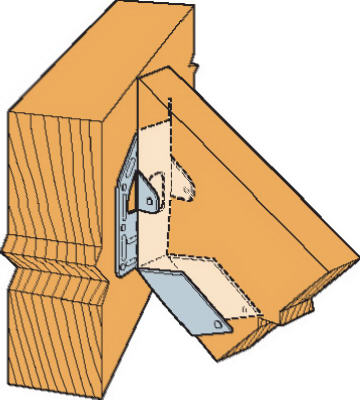
Episode 561
November 2, 2019
Projects, tasks and procedures are dynamic.
We are taught in school to follow step by step procedures to accomplish a goal or arrive at a conclusion.
This is OK if you memorize how to do everything all the time wherever you are.
Maybe that is the point of Google. Prior to starting any project we can Google a YouTube and see how it is done… no memorization necessary.
The trouble is that even in YouTube there is more than one way to proceed for every task.
Playing a project flexibly by ear is the only way to get from beginning to end.
i am building a patio cover.
It is a pitched wood framed structure with 2×6 rafters and 4×4 posts.
Since i have never built a wood framed structure i do not know how to attach the spanning support beam to the posts or the rafters to the beam.
The rafters hang from a ledger attached to the house.  Rafter ends connect to the ledger with joist hangers. That much is pretty common and easily done.
Rafter ends connect to the ledger with joist hangers. That much is pretty common and easily done.
The height of the posts and beam is determined by my desired pitch. A scale drawing helped me determine the position and height of the post and beam.
The next step was to determine a post and beam design. Notched 4×4 posts with bolted 2×6 beams seemed strong, but gave only a 1.5 inch purchase where the two spanning rafters join. i settled on 4×6 beams sitting atop 4×4 posts connected with Simpson Strong-tie post top steel brackets… simple and easy.
i settled on 4×6 beams sitting atop 4×4 posts connected with Simpson Strong-tie post top steel brackets… simple and easy.
Next was the method of connecting the rafters to the beams. Conventional construction suggests bird’s mouth notches in the bottom of the rafters which allow them to sit flatly on the beam. A bird’s mouth location must be calculated using the Pythagorean theorem, then laid out and cut for each rafter. As Barbie once famously said, “Math is hard.”
i asked my brother what he would do. He said, “I would rest the rafters on the beam, then add wedges to fill in the gaps under the rafter connections.” Brilliant.
Now, with the design problems solved, the execution was simple. i used a tape measure, pencil, saw, ladder, joist hanger, box nails, hammer, mending plate, toe nailed screws, some wooden wedges and gorilla glue and the rafter was hung.
For every project, whether it be construction or highly variable activities like working a computer program, flexibility is essential. The process is dynamic.
There are not definitive steps A to Z. There is no one correct way to proceed. When any step along the way is not apparent, let a little Googling, dead reckoning and dumb luck be your guide.









The Mini is up and running fine after 60 upgrades and 12 password adjustments
Many thanks
This is good news regarding the bLog “A Trip to Catalina.” https://theimentor.com/2019/10/16/a-trip-to-catalina/ It seems to me that Apple should take responsibility for the pain they caused with this Catalina install.
Great wisdom for a life well lived!